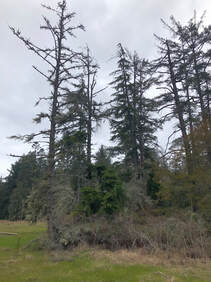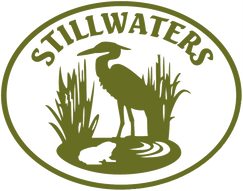On Friday evenings, Stillwaters hosts lectures on Zoom about our monitoring projects and results. Every talk covers a different project and how it has helped us understand our local ecosystem.
Lecture Library
The Decline of Sitka Spruce in Carpenter Creek Estuary

Program Coordinator Hanna Brush shares brand-new findings from our Sitka spruce study, shedding some light on why these forest giants are declining and why it can actually help the salt marsh ecosystem.
Amphibian Egg Mass Monitoring

Program Assistant Hanna Brush introduces Clean Water Kitsap and Stillwaters' amphibian egg mass monitoring program and discuss findings from two years of monitoring data.
Estuary Sediment

College intern Quinn Habedank shares the recent developments in the sediment analysis, such as the increase in fine sand after 2018, principal component analysis visualization, other data visualizations, as well as a few future avenues for exploration.
Sitka Spruce in Salt Marshes

Program Coordinator Hanna Brush introduces the Sitka spruce trees of Carpenter Creek estuary and shares the exciting work we're doing to understand them.
Sitka spruce trees are a prominent fixture of many tidal wetlands across the Pacific Northwest. However despite their suitability to these coastal ecosystems, the Sitka spruce in the Carpenter Creek estuary appear to be in decline. To better understand this issue and to see if reforestation is a viable option to combat this die off, Stillwaters planted 120 Sitka Spruce seedlings with the help of our generous donors and volunteers. Unfortunately though, many of the seedlings did not survive, and as of September only 41 seedlings were still alive. However even the seedlings that didn't make it provided us with insights into what these seedlings need to survive. The two factors which appeared to have the greatest impact on survival were the location a seedling was planted in, and the moisture of the soil. In general, the seedlings in dry soils had the highest survival, as did those seedlings in upland forested areas or near the edge of freshwater streams. These trends provide an important insight into what may be happening to the Sitka spruce in the estuary. To further understand this phenomenon, Stillwaters will initiate a study of the older Sitka spruce trees in the estuary to measure the effects of various environmental factors on tree health. We will also investigate whether the dieback of Sitka spruce may have been related to the recent culvert removal project, which had a great impact on the conditions of the salt marsh.

